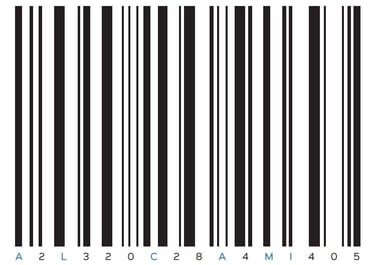New requirements under the Drug Supply Chain Security Act (DSCSA) have been set for manufacturers, repackagers, wholesale, distributors, dispensers and third-party logistics providers. Some of these requirements began in 2014 with additional requirementscontinuing to be phased in until 2023. The November deadline is part of the multi-year initiative to secure the supply chain for pharmaceuticals in the U.S.
The goal of the DSCSA is to enable tracking of drug product down to the individual unit of sale and to improve detection and removal of counterfeit products in the drug supply chain along with facilitating more efficient drug recalls.
November 27, 2017 Requirements:
- A manufacturer (application holder) shall provide the transaction information, transaction history and transaction statement required under subparagraph (A)(i) in electronic format.
- A manufacturer shall affix or imprint a product identifier to each package and homogenous case of a product intended to be introduced in a transaction into commerce. Such manufacturer shall maintain the product identifier information for such product for not less than six years after the date of the transaction. This product identifier will be in human readable form that includes the National Drug Code (NDC number), serial number, lot number and expiration date printed in a 2D barcode.
- During an investigation into suspect product, the manufacturer must be able to verify the product identifier on the package, including the standardized numerical identifier.
- Upon receiving a request for product verification, a manufacturer must be able to verify the status of a product, whether it is valid or counterfeit, within 24 hours.
Between now and 2024, FDA plans to publish final guidance on system attributes necessary to enable secure tracing at the packaging level and also on standards for data exchange to enhance secure tracing of product at the packaging level. Additionally, the FDA plans to develop regulations establishing a drug distribution security system for electronic tracing of product at the packaging level. The FDA has issued several Guidances that provide recommendations for compliance with the DSCSA.
Current FDA Draft and Final Guidances:
- Drug Supply Chain Security Act Implementation: Identification of Suspect Product and Notification
- DSCSA Implementation: Product Tracing Requirements – Compliance Policy
- Guidance for Industry: Standards for Securing the Drug Supply Chain – Standardized Numerical Identification for Prescription Drug Packages
- DSCSA Implementation: Annual Reporting by Prescription Drug Wholesale Distributors and Third-Party Logistics Providers (Draft Guidance)
- DSCSA Standards for the Interoperable Exchange of Information for Tracing of Certain Human, Finished, Prescription Drugs: How to Exchange Product Tracing Information (Draft Guidance)
- The Effect of Section 585 of the FD&C Act on Drug Product Tracing and Wholesale Drug Distributor and Third-Party Logistics Provider Licensing Standards and Requirements: Questions and Answers (Draft Guidance)
The DSCSA does not explicitly require aggregation (tracking of parent/child relationships from unit level to case and case to pallet). However, it includes statements such as “…enable secure tracing of product at the package level, including allowing for the use of verification, inferences, and aggregation as necessary.” Wholesalers and 3PLs are requiring serialized product to be aggregated since they need the capability to infer contents of pallets and cases to conduct their business efficiently. Without aggregation and inference, wholesalers and 3PLs would need to break down all packaging levels to the smallest saleable unit to determine which unit level serial numbers are involved in a transaction. So while aggregation is not legally required per DSCSA, it is required by many trading partners and is becoming industry standard.

With deadlines quickly approaching for serialization requirements, a strong cross-functional team is crucial to implement new serialization systems and processes. Verification requirements start in 2017 for manufacturers, 2018 for repackagers, 2019 for wholesale distributors and 2020 for dispensers. Following these dates, products can only be transferred between authorized trade partners. It is essential that all participants in the pharmaceutical drug supply chain become familiar with the law and its implementation over the next six years, and work with partners that understand and comply with the regulation.
Alcami is prepared. We provide proactive project management and technical expertise to streamline customer onboarding and ensure continuity of supply. Our packaging lines have been upgraded for full serialization and aggregation capability and will be fully compliant with the new regulations. Alcami offers a universal connection point for customers for the exchange of serialized data by using an enterprise serial number management platform. This universal connection point minimizes onboarding efforts and gives customers access to any Alcami packaging line and packaging format.
To learn more about how this affects your company, be sure to register for our upcoming webinar, “Get on Track with Serialization: Lessons Learned,” featuring Lee Murtagh, project leader for Alcami’s serialization implementation.





